Water Resistance of Acrylic Adhesive Tapes for Rooftop Fastening
Abstract
:1. Introduction
1.1. VHB Tapes in Metal Joints at Various Temperatures and Testing Rates
1.2. Adhesion of the VHB Tapes to a Metal Substrate
1.3. Use of Photovoltaic Solar Panels on Building Rooftops
2. Materials and Methods
2.1. Materials
2.2. Double-Lap Joint (DLJ) Shear Test
2.3. Tensile Tests
2.4. Optical Measurements
2.5. Water Immersion Test
2.6. Chemical Analysis of Adhesive Tape
3. Results
3.1. Shear Strength and Failure Modes of Joints
3.2. Results of the Tensile Testing
3.3. Chemical Analysis Results
4. Discussion and Interpretation of Results
4.1. Mechanical Properties
4.2. Mode of Failure
4.2.1. Failure Mode of Reference Batches of DLJ and Tensile Specimens
4.2.2. Failure Mode of the Immersed Batch of Specimens
5. Conclusions
- The tensile specimens showed an average tensile strength of 0.13 MPa for the longitudinal arrangement and of 0.19 MPa for the perpendicular arrangement. A lower value than expected was achieved due to the combination of tensile load and peeling.
- The average shear strength of the reference joint was measured at 0.47 MPa for all tested substrates and 0.30 MPa for all tested substrates after immersion.
- The chemical analyses showed only minor changes in the chemical structure of the adhesive. The leachate contained ZnO, which is a filler.
- After the shear strength and shear modulus reduction analyses, it was shown that specimens with a smooth surface decreased shear strength by more than 39% due to a weak interphase between the adhesive tape and the substrate.
- The mode of failure analysis confirmed that a smooth substrate surface leads to a more probable adhesive mode of failure, even in the reference batch of specimens.
- For the reference specimens, a cohesive failure close to the substrate surface was observed, indicating limits in the integrity of the adhesive tape.
- After immersion, roughening of the surface improved the adhesion of the tape to the substrate in contrary to the specimens with smooth substrate. However, the anodized aluminum specimens exhibited the best resistance to immersion as they had the lowest increase in an adhesive mode of failure.
- The GPH-110GF tape itself showed resistance to water immersion for 21 days; however, its adhesion to the substrates was highly reduced.
Author Contributions
Funding
Data Availability Statement
Acknowledgments
Conflicts of Interest
References
- Hart, K.M. Held Together with Tape. Mech. Eng.-CIME 1999, 121, 30. Available online: https://link.gale.com/apps/doc/A57951031/AONE?u=anon~e154bfd9&sid=googleScholar&xid=447c0254 (accessed on 4 April 2024).
- 3M VHB Tape Durability Technical Bulletin. 2018. Available online: https://multimedia.3m.com/mws/media/98989O/3m-vhb-tape-durability-technical-bulletin.pdf (accessed on 15 March 2024).
- Nečasová, B.; Liška, P.; Šlanhof, J. Analysis of Temperature Effect on Deformation Behaviour and Bond Strength of Adhesive Joints with Steel and Composite Substrates. In Industrial Applications of Adhesives; da Silva, L.F.M., Adams, R.D., Sato, C., Dilger, K., Eds.; Springer: Singapore, 2021; pp. 107–125. [Google Scholar] [CrossRef]
- Katsivalis, I.; Feih, S. Prediction of moisture diffusion and failure in glass/steel adhesive joints. Glass Struct. Eng. 2022, 7, 381–397. [Google Scholar] [CrossRef]
- Van Lancker, B.; Dispersyn, J.; De Corte, W.; Belis, J. Durability of adhesive glass-metal connections for structural applications. Eng. Struct. 2016, 126, 237–251. [Google Scholar] [CrossRef]
- Borges, C.S.P.; Sousa, J.D.P.; Marques, E.A.S.; Carbas, R.J.C.; Chaleix, D.; Gilbert, F.; Pirart, J.; Rachiele, L.; Laffineur, F.; da Silva, L.F.M. Study on the influence of water ingress on the interface of high strength zinc coated steels and epoxy adhesives. Int. J. Adhes. Adhes. 2024, 129, 103595. [Google Scholar] [CrossRef]
- Čolo, A.; Tasić, P.; Hajro, I. Investigation of Primer Influence on Strength of Aluminium Specimens Bonded by VHB Tape. In New Technologies, Development and Application II; Karabegović, I., Ed.; Springer: Cham, Switzerland, 2020; pp. 130–135. [Google Scholar] [CrossRef]
- Townsend, B.W.; Ohanehi, D.C.; Dillard, D.A.; Austin, S.R.; Salmon, F.; Gagnon, D.R. Characterizing acrylic foam pressure sensitive adhesive tapes for structural glazing applications—Part I: DMA and ramp-to-fail results. Int. J. Adhes. Adhes. 2011, 31, 639–649. [Google Scholar] [CrossRef]
- Townsend, B.W.; Ohanehi, D.C.; Dillard, D.A.; Austin, S.R.; Salmon, F.; Gagnon, D.R. Characterizing acrylic foam pressure sensitive adhesive tapes for structural glazing applications—Part II: Creep rupture results. Int. J. Adhes. Adhes. 2011, 31, 650–659. [Google Scholar] [CrossRef]
- Bull, E.; Cholaky, J.; Kuhlman, S.J.H.; Carbary, L.; Wolf, A.T. A Comparative Evaluation of the Behavior of Structural Silicone vs. Acrylic Foam Tape Subjected to High Strain Rates. In Durability of Building and Construction Sealants and Adhesives: 5th Volume; ASTM International: West Conshohocken, PA, USA, 2015; pp. 297–327. [Google Scholar] [CrossRef]
- Kremer, T. Useful Design Criteria for Acrylic Foam Tapes in Demanding Industrial Applications. 2005. Available online: https://multimedia.3m.com/mws/media/940975O/3m-vhb-tapes-design-criteria-pstc-tech-28-paper-2005.pdf?fn=PSTC+Tech+28+Paper+2005+-+3M+VHB (accessed on 15 March 2024).
- Qiao, Y.; Shin, Y.; Ramos, J.L.; Engelhard, M.H.; Seffens, R.J.; Merkel, D.R.; Simmons, K.L. Plasma treatment on both adhesive tape and adherends for significantly enhanced CFRTP-related adhesive joints. Appl. Surf. Sci. 2024, 649, 159092. [Google Scholar] [CrossRef]
- Avci-Karatas, C. Design and Analysis of Steel Support Structures Used in Photovoltaic (PV) Solar Panels (SPs): A Case Study in Turkey. 2020. Available online: https://www.researchgate.net/publication/344517600_Design_and_Analysis_of_Steel_Support_Structures_Used_in_Photovoltaic_PV_Solar_Panels_SPs_A_Case_Study_in_Turkey (accessed on 15 March 2024).
- Joshi, D.; Webb, J.E. Mechanical Reliability Calculations for the Thin Specialty Glass PV Solar Panels. Int. J. Struct. Glass Adv. Mater. Res. 2019, 3, 87–97. [Google Scholar] [CrossRef]
- Schulze, S.-H.; Pander, M.; Naumenko, K.; Altenbach, H. Analysis of laminated glass beams for photovoltaic applications. Int. J. Solids Struct. 2012, 49, 2027–2036. [Google Scholar] [CrossRef]
- ETAG 002; Structural Sealant Glazing Systems Part 1: Supported and Unsupported Systems. European Organization for Technical Approvals: Brussels, Belgium, 2012. Available online: http://www.sgpstandard.cz/editor/files/stav_vyr/dok_es/eta/etag/002_1_en.pdf (accessed on 15 March 2024).
- ISO 10365:2022; Adhesives Designation of Main Failure Patterns. The International Organization for Standardization: Geneva, Switzerland, 2022.
- Machalická, K.V.; Vokáč, M.; Pokorný, P.; Pavlíková, M. Effect of various artificial ageing procedures on adhesive joints for civil engineering applications. Int. J. Adhes. Adhes. 2020, 97, 102476. [Google Scholar] [CrossRef]
- Packham, D.E. Theories of Fundamental Adhesion. In Handbook of Adhesion Technology; da Silva, L.F.M., Öchsner, A., Adams, R.D., Eds.; Springer: Berlin/Heidelberg, Germany, 2011; pp. 9–38. [Google Scholar] [CrossRef]
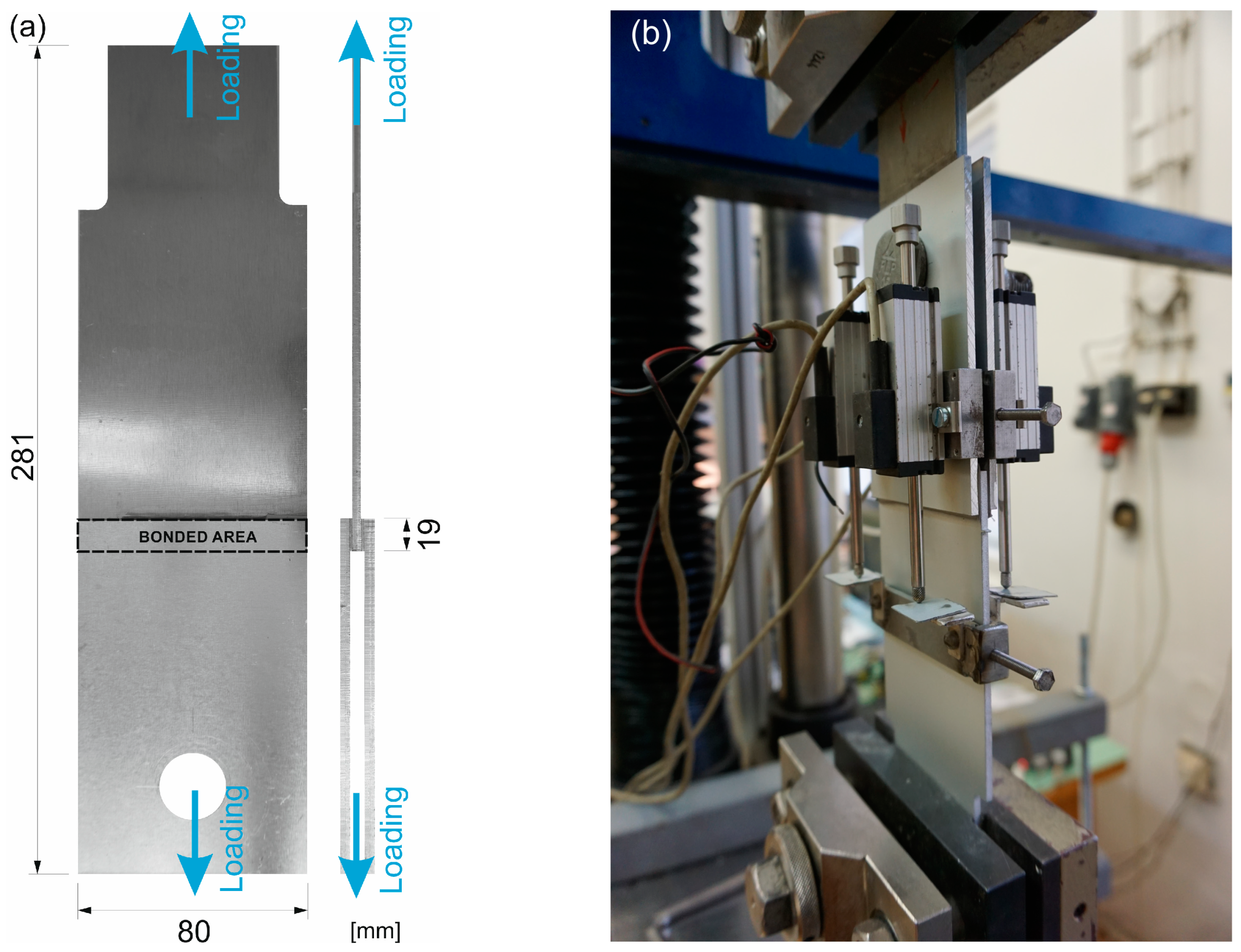
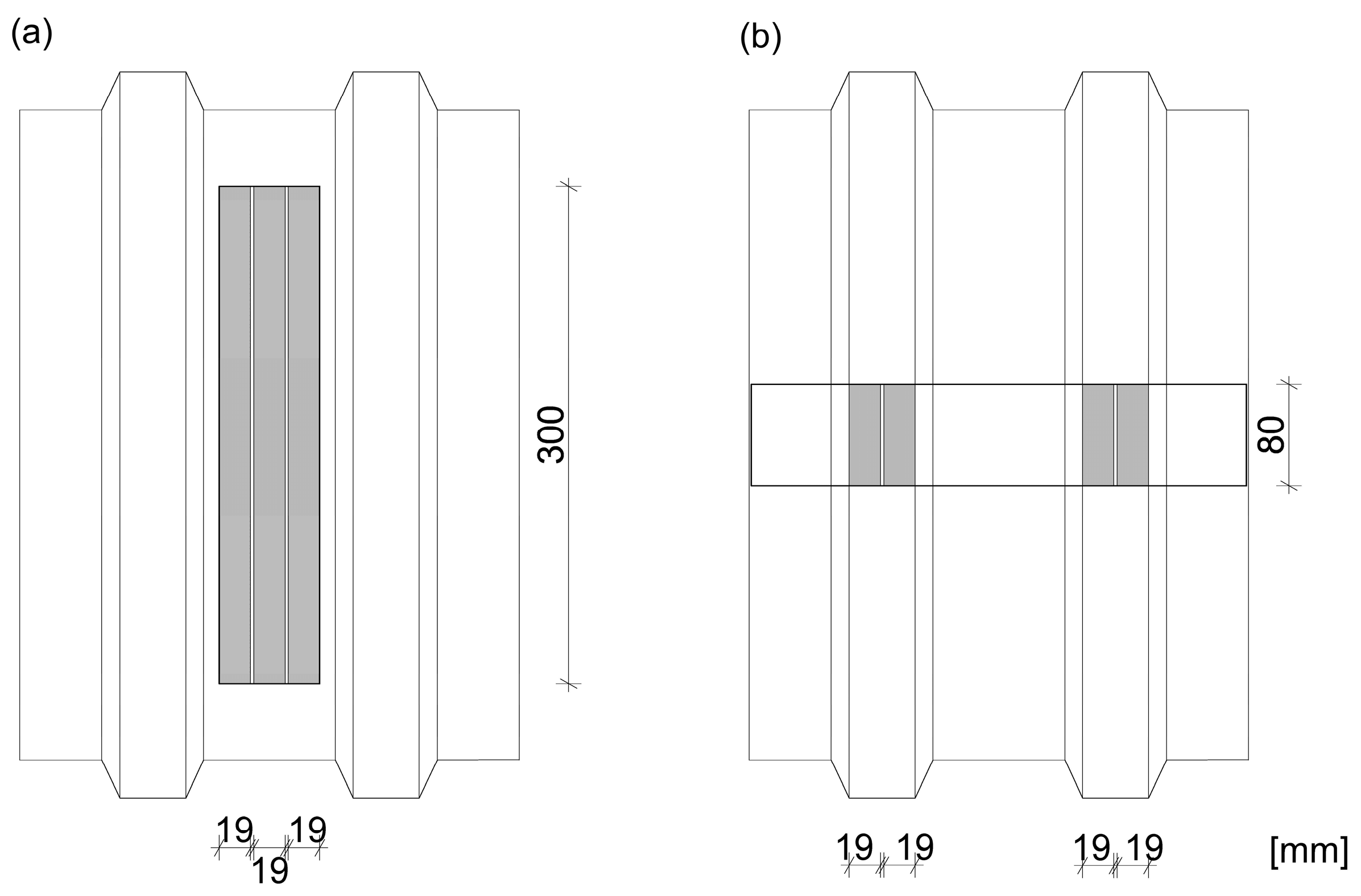
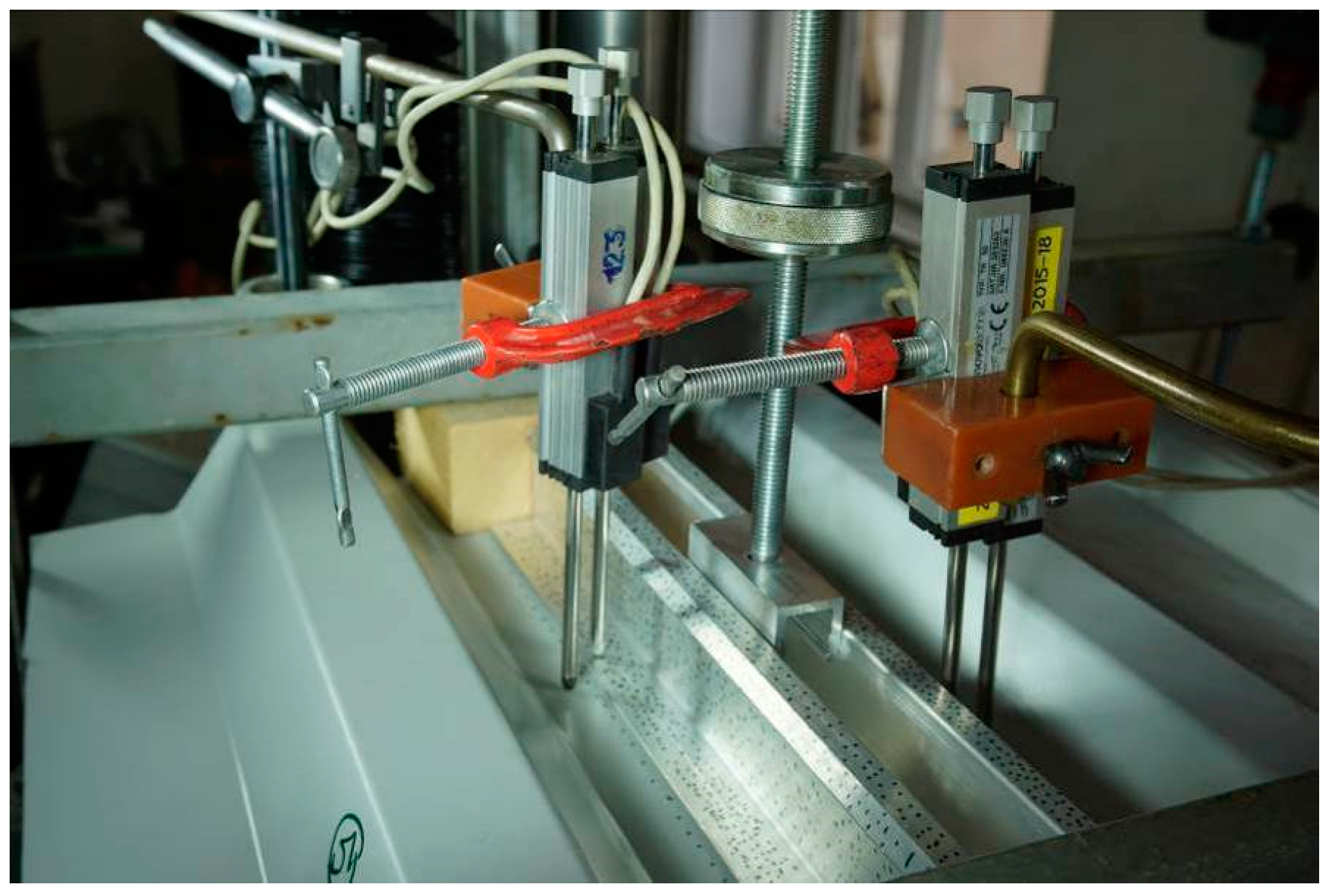






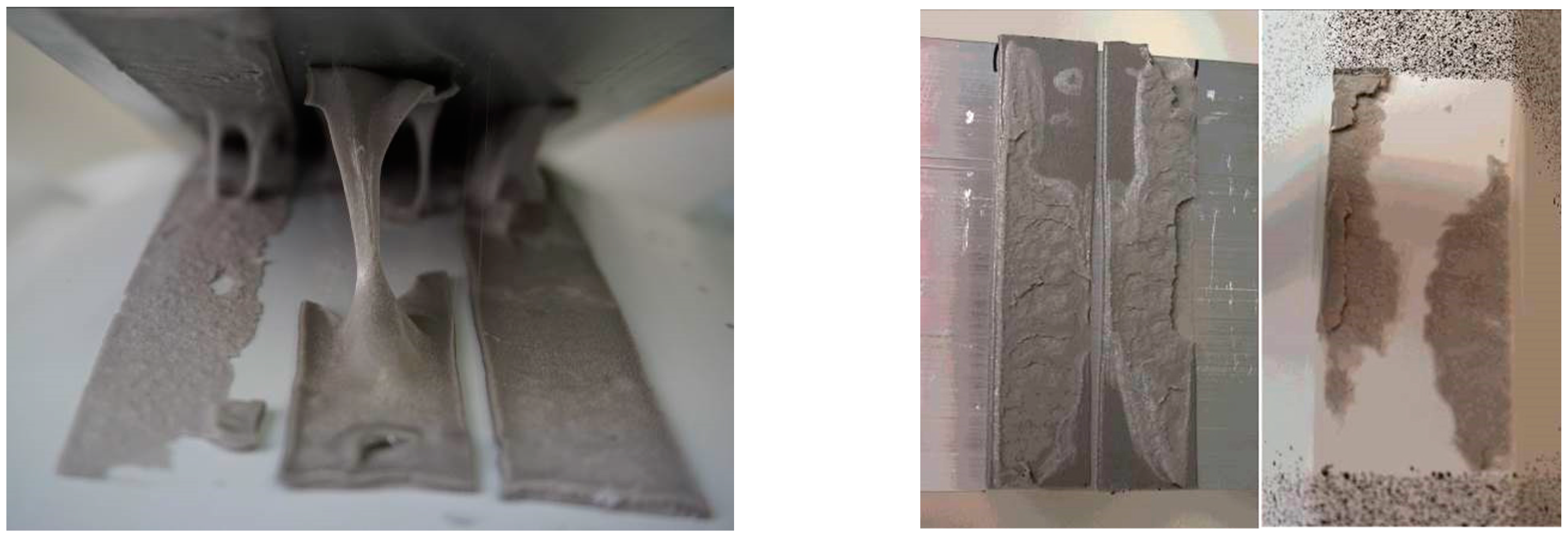
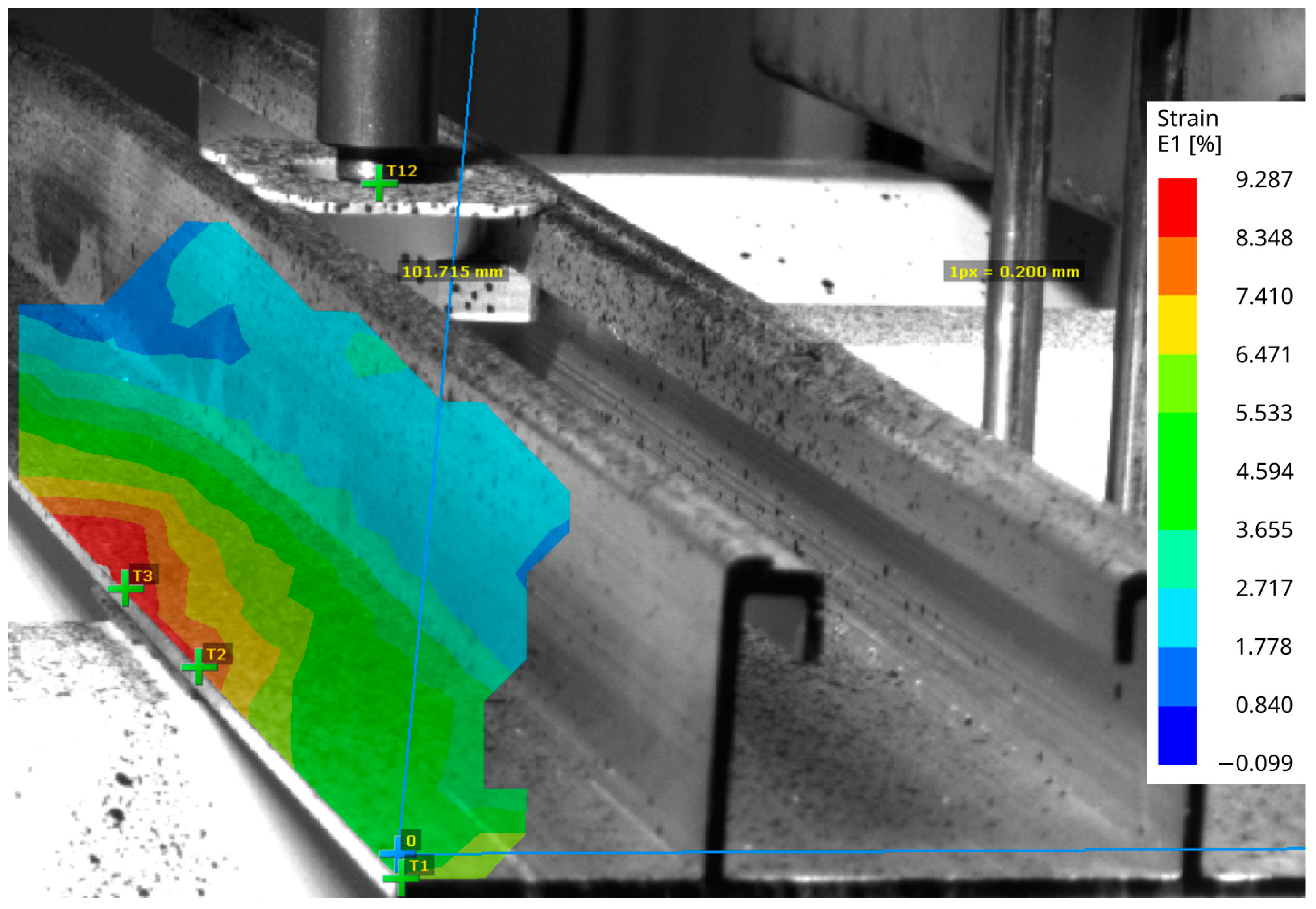
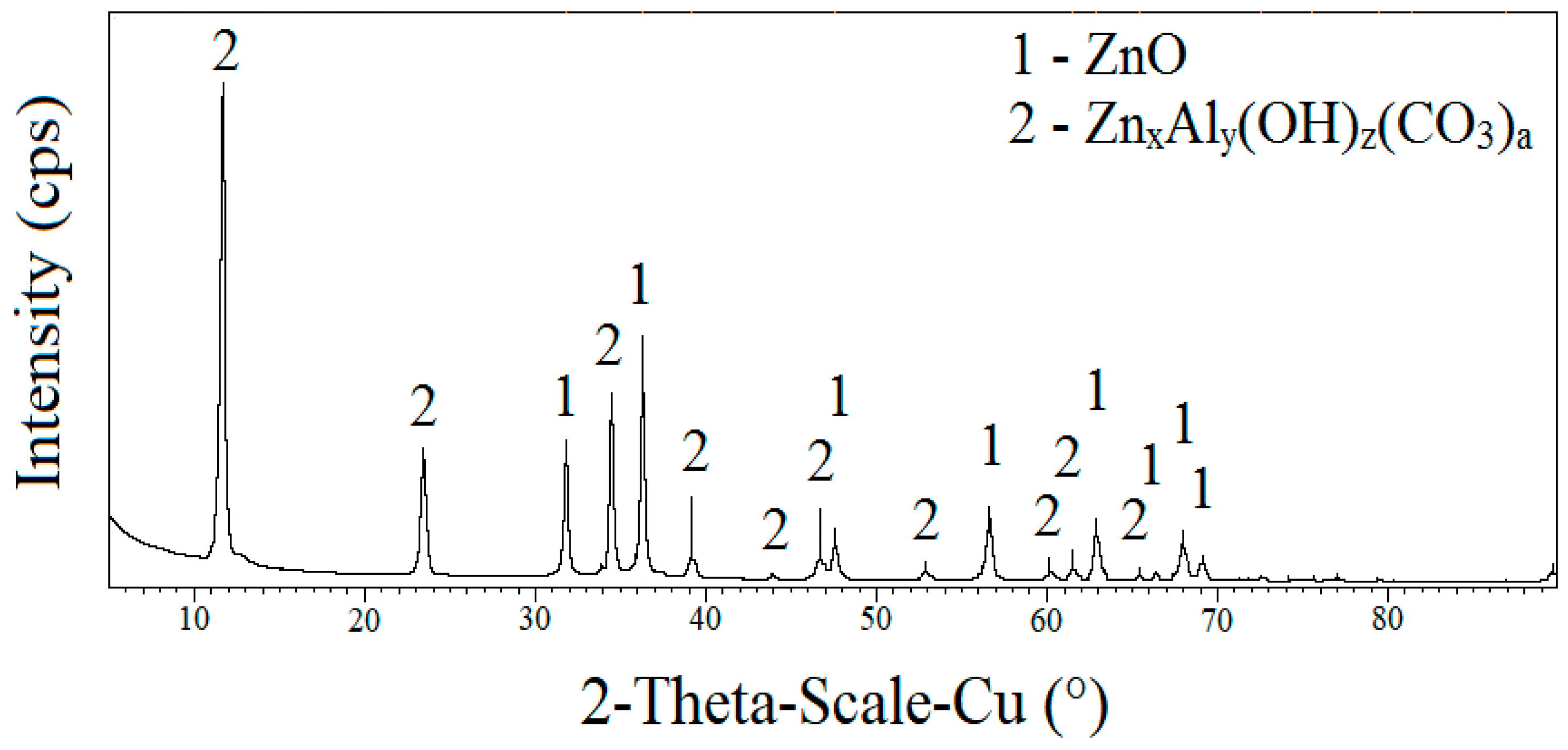
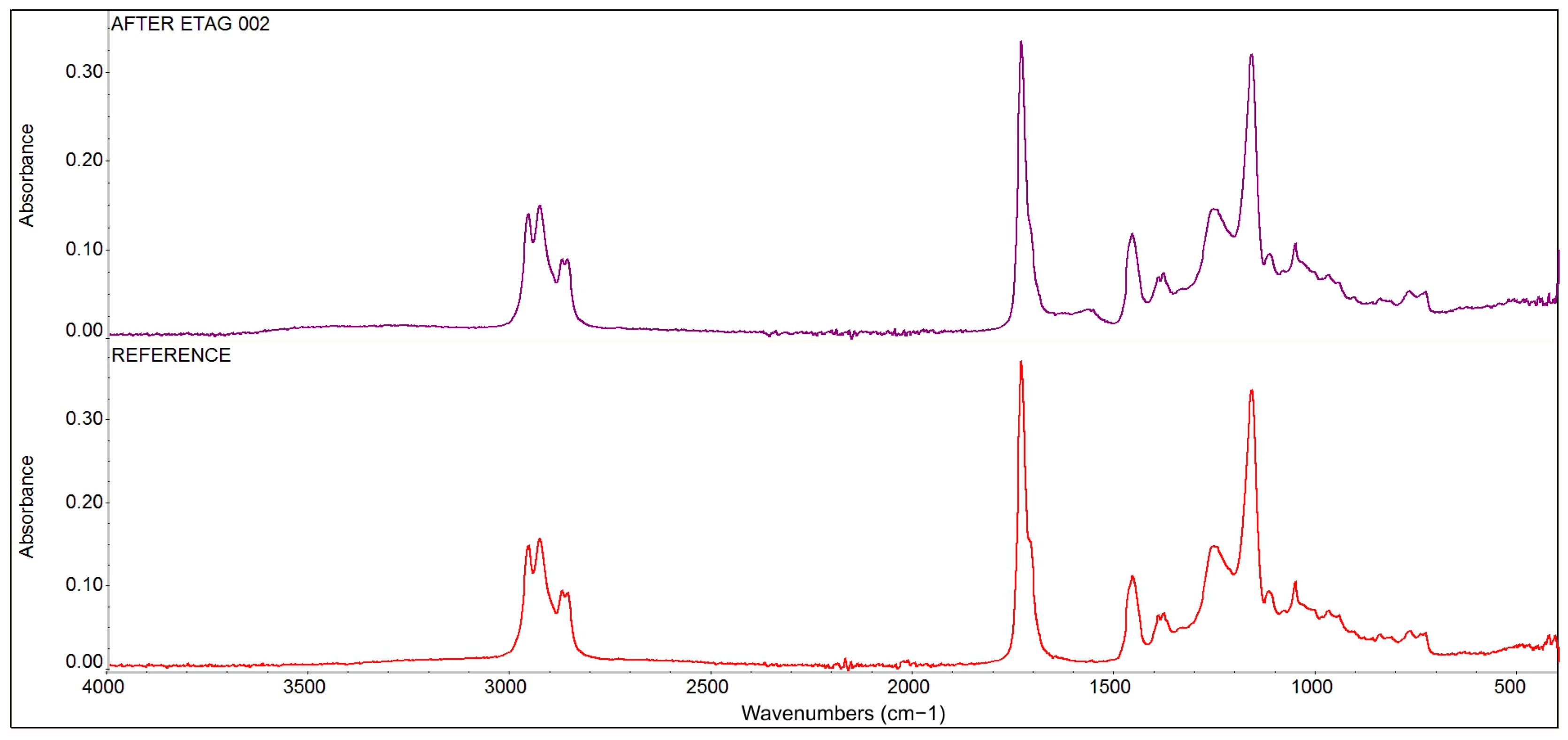
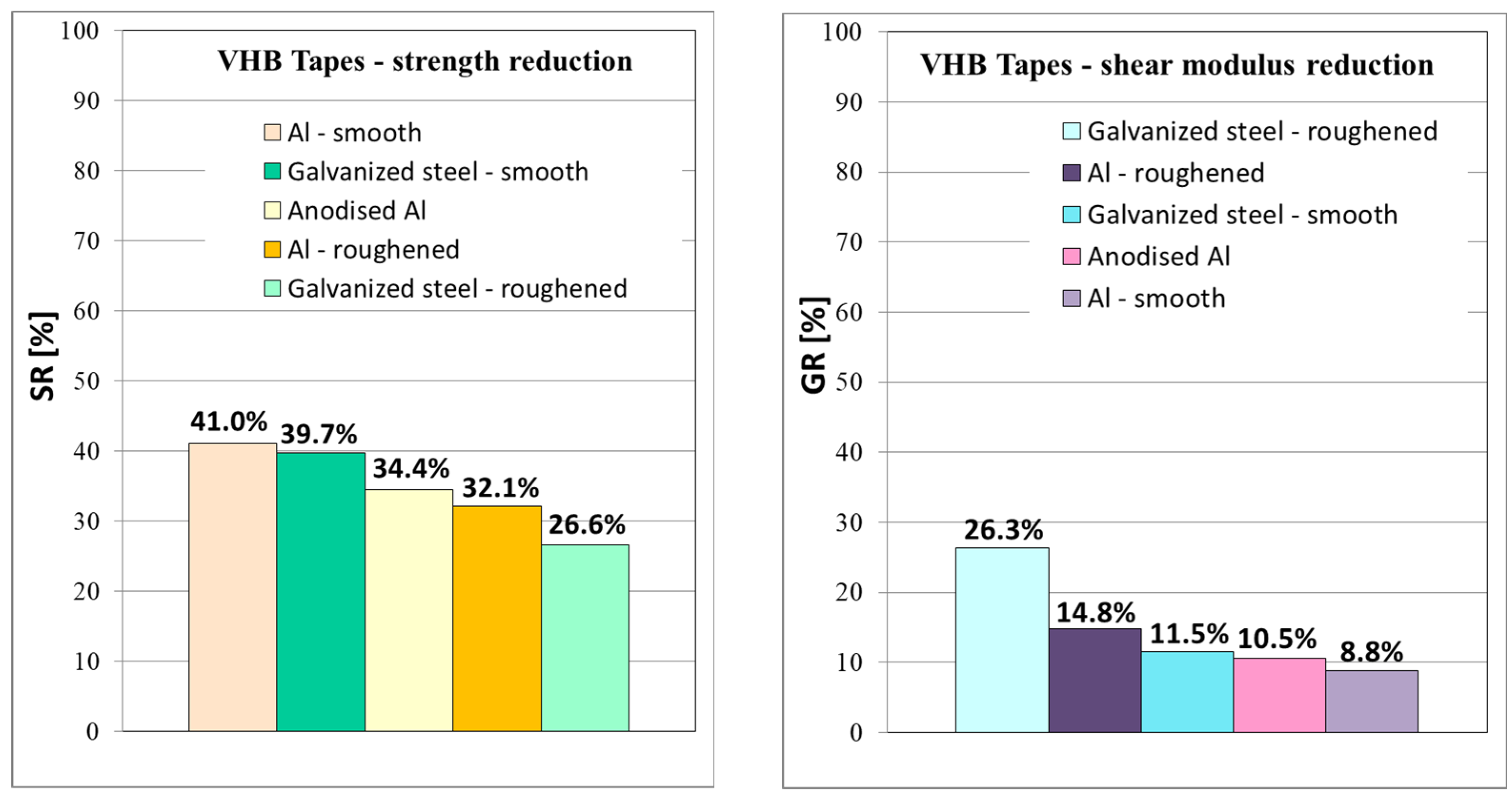
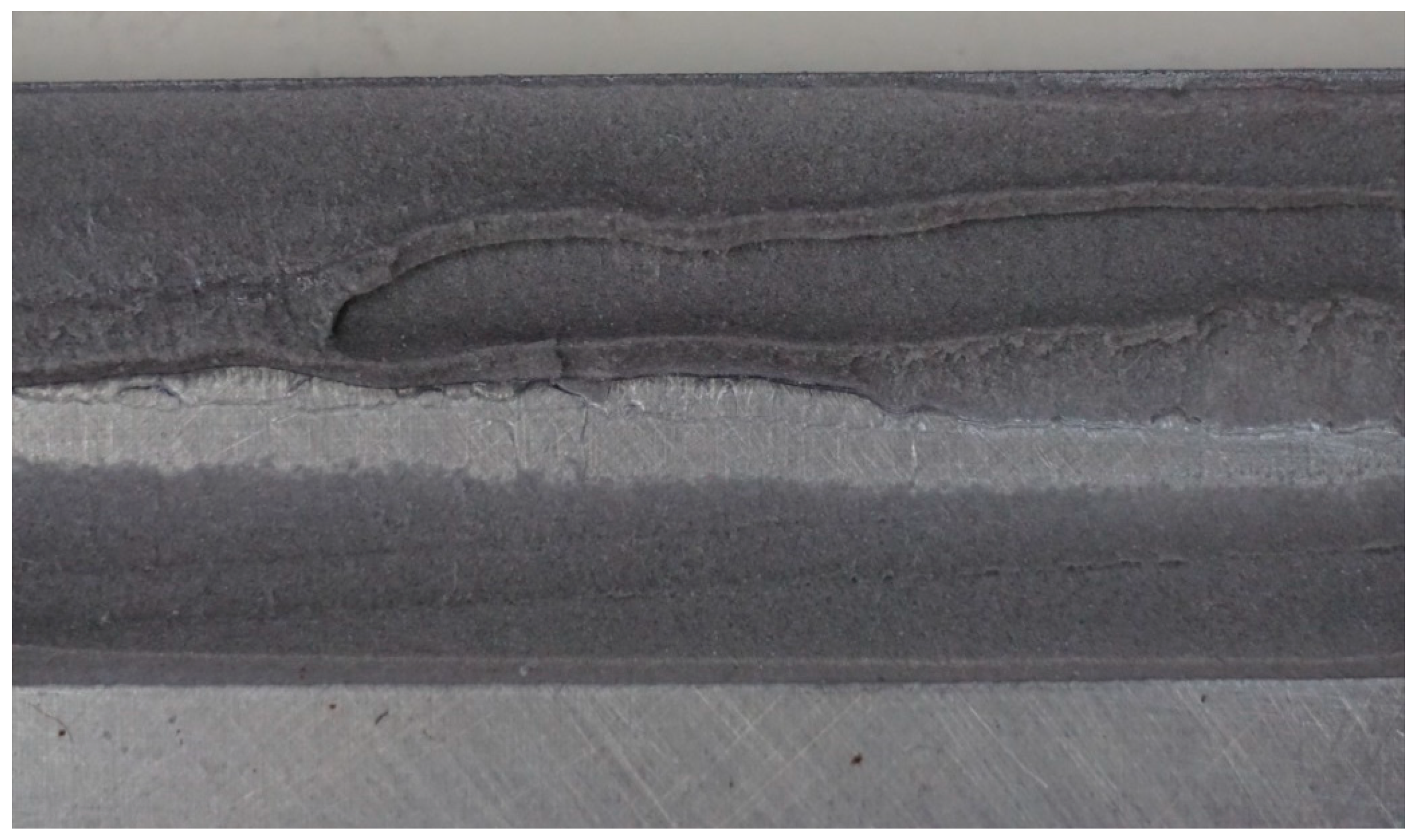
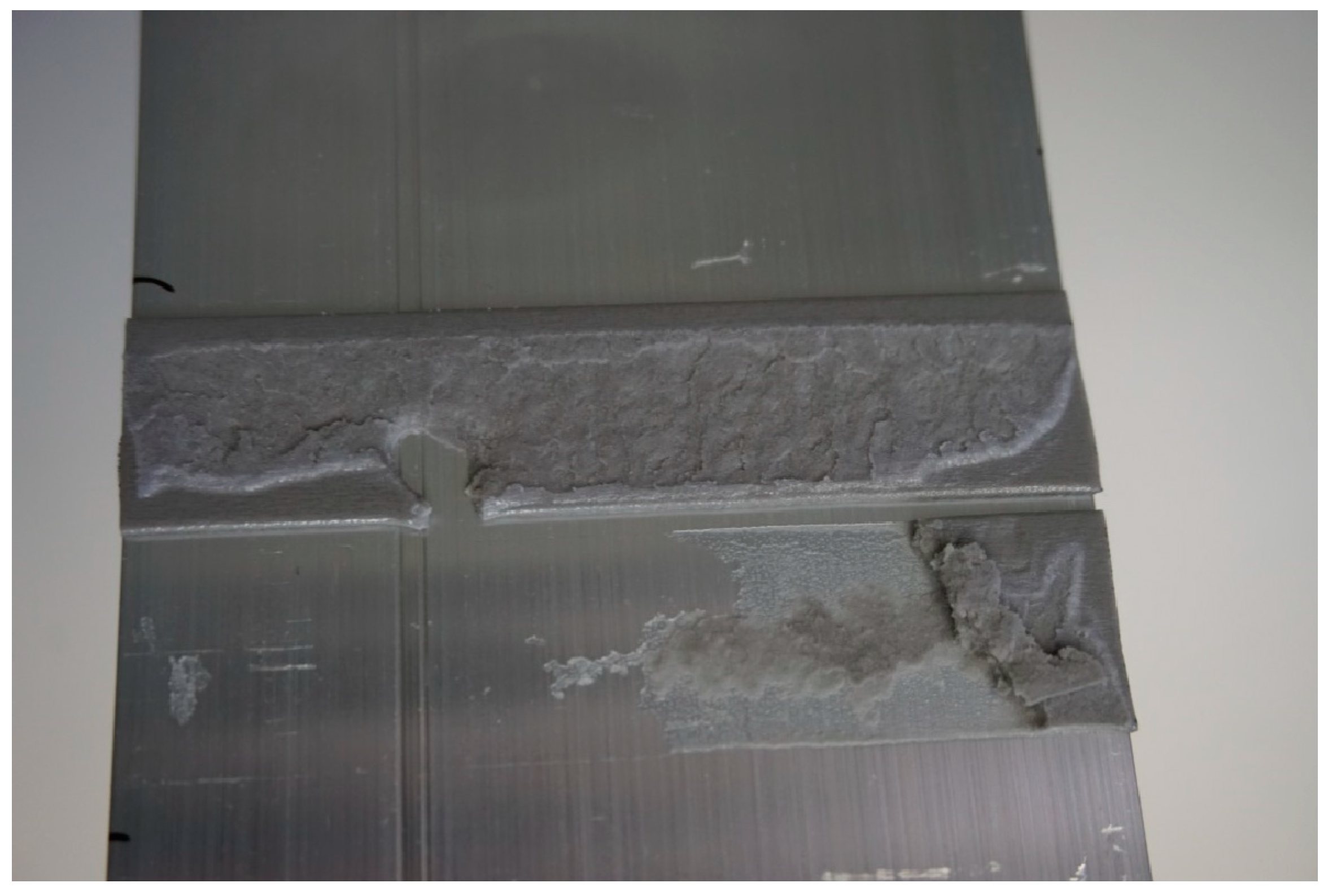

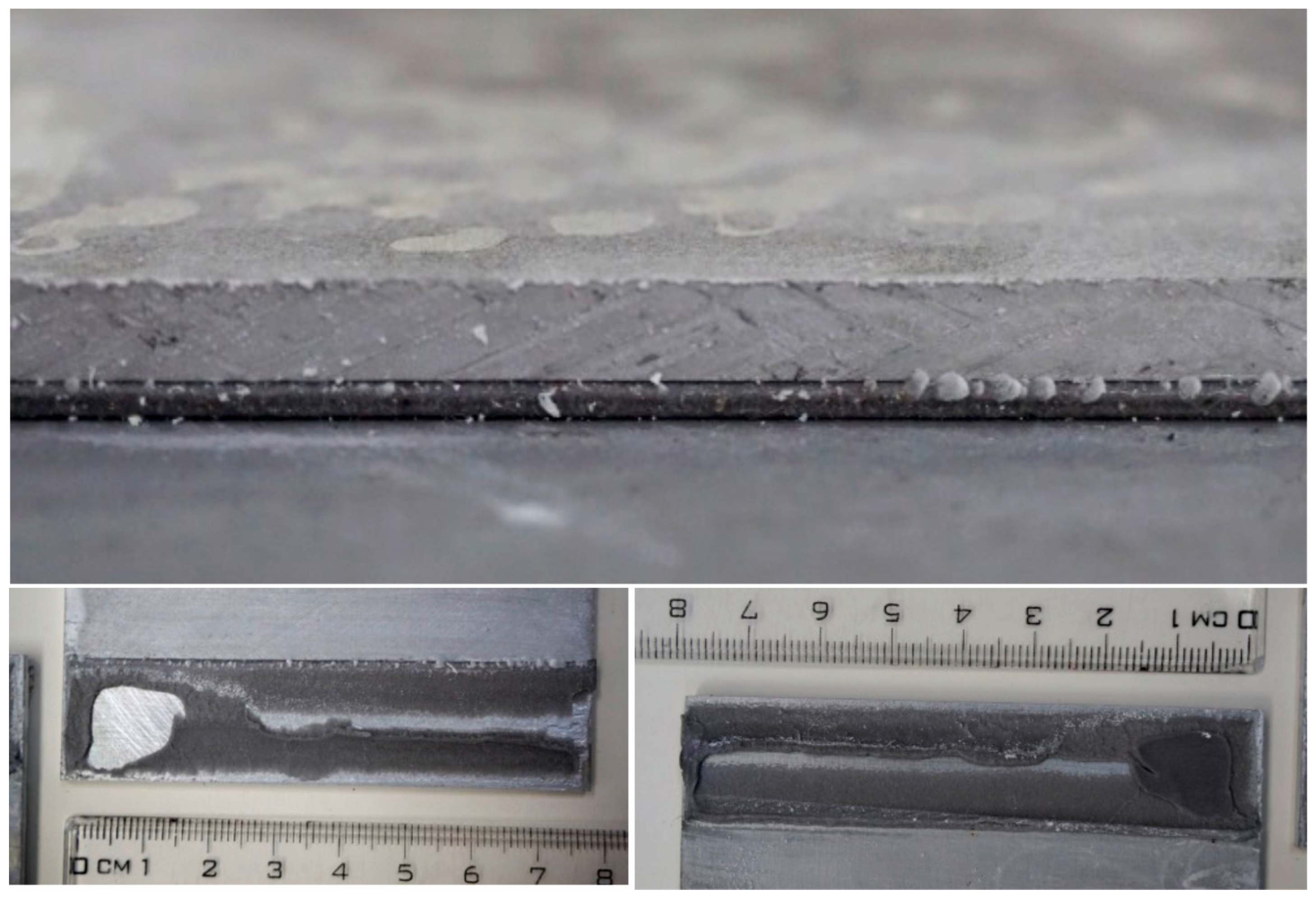

| Substrate Material and Its Treatment | Reference Batches | Immersion Batches | Tensile Batches |
|---|---|---|---|
| Aluminum, smooth (AlSi1MgMn + AlMg1) − DLJ | 5 | 5 | - |
| Aluminum, roughened (AlSi1MgMn + AlMg1) − DLJ | 5 | 5 | - |
| Anodized aluminum − DLJ | 5 | 5 | - |
| Galvanized steel, smooth − DLJ | 5 | 5 | - |
| Galvanized steel, rough − DLJ | 5 | 5 | - |
| AlSiMg + steel with PE coating − perpendicular | - | - | 3 |
| AlSiMg + steel with PE coating − longitudinal | - | - | 3 |
| Type of Specimen | Reference Set | ETAG 002 Set | ||
|---|---|---|---|---|
| Average Shear Strength (MPa) | Failure Mode | Average Shear Strength (MPa) | Failure Mode | |
| Roughened aluminum | 0.44 ± 0.02 | AF/CF (SCF) | 0.30 ± 0.03 | AF/CF |
| Aluminum (smooth) | 0.48 ± 0.03 | AF/CF (SCF) | 0.28 ± 0.02 | AF/CF |
| Anodized aluminum | 0.47 ± 0.04 | AF/CF (SCF) | 0.31 ± 0.02 | AF/CF (SCF) |
| Roughened galvanized steel | 0.46 ± 0.03 | AF/CF | 0.34 ± 0.02 | AF/CF |
| Galvanized steel (smooth) | 0.49 ± 0.02 | AF/CF (SCF) | 0.29 ± 0.02 | AF/CF (SCF) |
| Type of Specimen | Reference Set | ETAG 002 Set |
|---|---|---|
| Roughened aluminum | 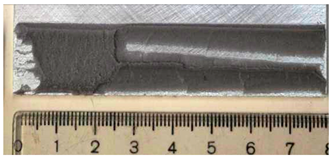 | 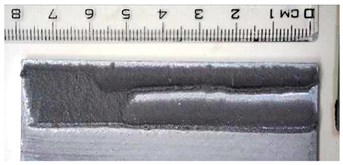 |
| Aluminum (smooth) |  |  |
| Anodized aluminum | 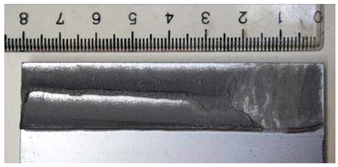 | 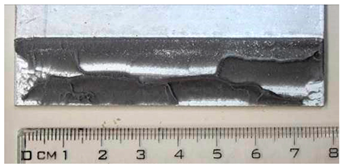 |
| Roughened galvanized steel | 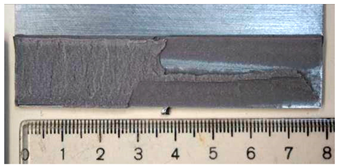 | 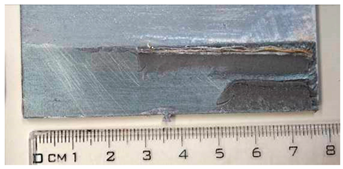 |
| Galvanized steel (smooth) | 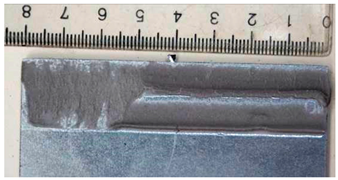 | 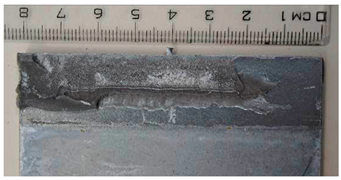 |
| Reference Sample | Sample after Exposure ETAG 002 | ||
|---|---|---|---|
| Element | Content (wt. %) | Element | Content (wt. %) |
| Mg | below the detection limit | Mg | below the detection limit |
| Al | 0.05 | Al | 0.01 |
| Si | 2.06 | Si | 1.89 |
| S | 0.11 | S | 0.10 |
| P | 0.04 | P | 0.05 |
| Ca | 1.32 | Ca | 1.27 |
| Sr | 0.01 | Sr | 0.01 |
| Cl | below the detection limit | Cl | below the detection limit |
| Mn | below the detection limit | Mn | below the detection limit |
| Fe | 0.05 | Fe | 0.03 |
| Zn | 0.81 | Zn | 0.01 |
| Ni | below the detection limit | Ni | below the detection limit |
| Cu | 0.01 | Cu | below the detection limit |
| Pb | below the detection limit | Pb | below the detection limit |
| Mo | 0.01 | Mo | below the detection limit |
| Ba | below the detection limit | Ba | below the detection limit |
| Type of Specimen | Adhesively Broken Part of Bonded Area | |
|---|---|---|
| Reference Set | After Immersion | |
| Roughened aluminum | 20% | 30% |
| Aluminum (smooth) | 55% | 75–80% |
| Anodized aluminum | 25% | 30% |
| Roughened galvanized steel | 20% | 50% |
| Galvanized steel (smooth) | 20% | 60% |
Disclaimer/Publisher’s Note: The statements, opinions and data contained in all publications are solely those of the individual author(s) and contributor(s) and not of MDPI and/or the editor(s). MDPI and/or the editor(s) disclaim responsibility for any injury to people or property resulting from any ideas, methods, instructions or products referred to in the content. |
© 2024 by the authors. Licensee MDPI, Basel, Switzerland. This article is an open access article distributed under the terms and conditions of the Creative Commons Attribution (CC BY) license (https://creativecommons.org/licenses/by/4.0/).
Share and Cite
Machalická, K.V.; Sejkot, P.; Vokáč, M.; Pokorný, P.; Obradović, V. Water Resistance of Acrylic Adhesive Tapes for Rooftop Fastening. Buildings 2024, 14, 1636. https://doi.org/10.3390/buildings14061636
Machalická KV, Sejkot P, Vokáč M, Pokorný P, Obradović V. Water Resistance of Acrylic Adhesive Tapes for Rooftop Fastening. Buildings. 2024; 14(6):1636. https://doi.org/10.3390/buildings14061636
Chicago/Turabian StyleMachalická, Klára V., Petr Sejkot, Miroslav Vokáč, Petr Pokorný, and Vera Obradović. 2024. "Water Resistance of Acrylic Adhesive Tapes for Rooftop Fastening" Buildings 14, no. 6: 1636. https://doi.org/10.3390/buildings14061636





